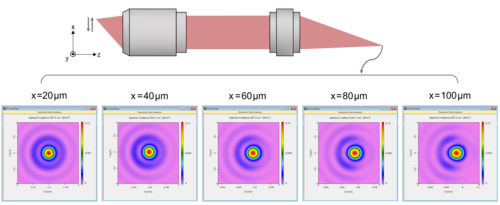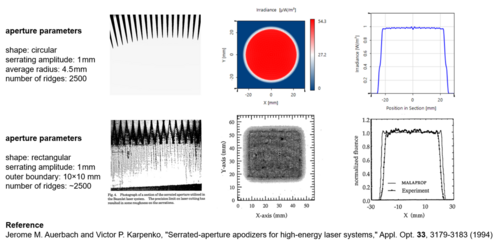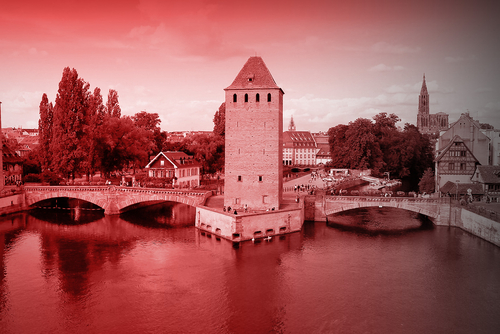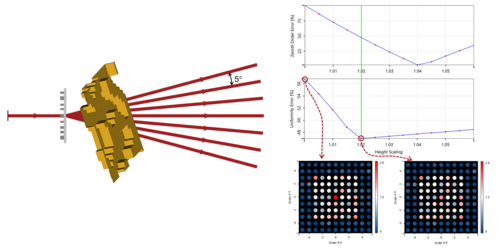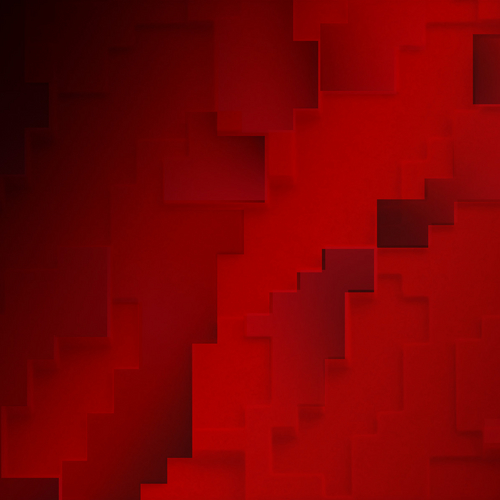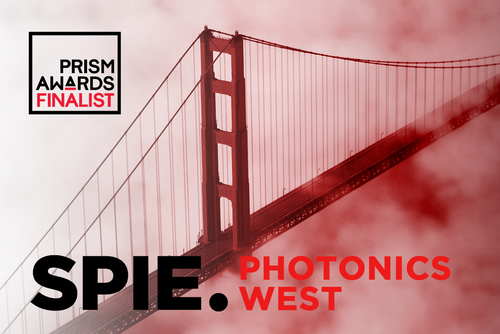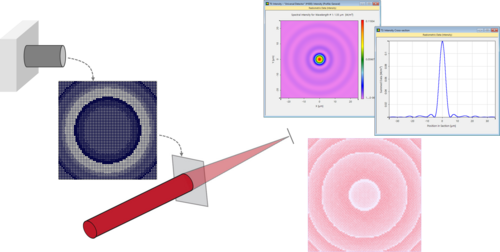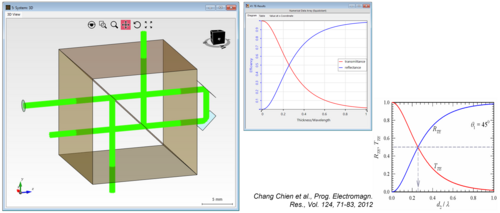What’s new?
High-NA Microscopy for Revolutionary Imaging
High numerical aperture (NA) microscopy revolutionizes our ability to probe biological structures with unprecedented clarity and precision. By harnessing the principles of optics, microscopes with numerical apertures that surpass traditional limits excel in capturing intricate cellular architectures, dynamic molecular interactions, and subtle nanoscale phenomena. Whether unraveling the mysteries of cellular dynamics or delving into the intricacies of nanomaterials, high NA microscopy empowers scientists to push the boundaries of exploration and discovery in the microscopic world.
VirtualLab Fusion, the optical modeling and design software, provides optical engineers with a comprehensive suite of interoperable simulation algorithms consolidated onto a single platform. This empowers engineers to thoroughly explore optical systems, like these powerful high-NA microscopes, encompassing all relevant effects, and equips them with the necessary tools for comprehensive investigation.
Spatial Filtering in Optical Systems for High-Quality Laser Beams
Spatial filtering is a crucial technique in optics for refining laser beams, enhancing their quality, and minimizing aberrations and unwanted diffraction effects. By employing a combination of lenses and apertures, spatial filtering selectively removes unwanted components such as noise, diffraction patterns, and spatial irregularities from the laser beam. This process ensures a more uniform intensity distribution, reduces divergence, and enhances coherence, leading to improved beam quality. Spatial filtering is indispensable in various applications including laser machining, holography, microscopy, and telecommunications, where precise control over beam characteristics is essential for optimal performance and accuracy.
VirtualLab Fusion's unique simulation techniques enable users to model filtering in detail, thereby allowing them to assess the impact on the performance and characteristics of the optical system.
SPIE Photonics Europe & Optical System Design
Experience two cross-disciplinary SPIE events showcasing cutting-edge optics and photonics technologies, encompassing digital optics, quantum technologies, optical imaging, sensing, and metrology. The events will also cover topics such as metalenses, AR/VR, and, of course, strategies for addressing these challenges through optical design.
This is an opportunity to engage with our technical experts and sales representatives to explore the diverse applications and solutions offered by our optical modeling and design software, VirtualLab Fusion.
You are encouraged to attend the Computational Optics Conference and enjoy Frank Wyrowski's presentations, where he will discuss a method for formulating physical optics propagation in homogeneous media, facilitating a smooth transition to the subset of geometrical optics in both theory and practice. But optical systems are not just free-space propagation, are they?
So, in addition, delve into the topic of "Physical-Optics Modeling and Design of Curved Surfaces" for deeper insights.
Further details and conference talks are provided below.
Back to the Future of DOE Design – Part 1: Design & Rigorous Optimization of a Diffractive Beam Splitter
Back to the Future of DOE Design
Part 1:
Design & Rigorous Optimization of a Diffractive Beam Splitter
In the first part of our series on diffractive optical elements (DOEs) we would like to turn our attention to diffractive beam splitters which, in contrast to other DOEs like beam shapers and diffusers, are desired to generate a uniform discrete pattern. Because the working principle of these components is based on diffraction of the incident light by these patterned surfaces, DOE beam shapers and beam splitters can be designed to be much thinner and lighter than their refractive counterparts, but the small structure sizes required make them difficult and resource-intensive to simulate.
In this field, the fast, accurate and flexible simulation and design algorithms of VirtualLab Fusion play to their strengths: the advantages of different solvers like the Thin Element Approximation (TEA), Rigorous Coupled Wave Analysis (RCWA) and Fourier techniques for free-space propagation are combined to allow optical engineers to not just design the elements, but also analyze their behavior in complex systems.
As an example, we would like to present the design of a non-paraxial beamsplitter, which is further optimized by applying rigorous techniques. The document (linked below) offers a deeper look into our diffractive optical element and microstructure components.
Back to the future of DOE design
Over the next two months we return to our roots and focus on diffractive optical elements (DOEs), but without forgetting how far we have come: We put DOE modelling and design in the context of modern VirtualLab Fusion technology.
In the upcoming webinar we showcase the design and analysis of diffractive optical elements acting as a diffuser and a beam splitter respectively. To that end, we employ the iterative Fourier transform algorithm (IFTA) optimization and, afterwards, study the performance of the resulting designs in a system, using VirtualLab Fusion’s interoperability of modeling techniques.
If you are a complete beginner, or if you would like to deepen or refresh your knowledge of VirtualLab Fusion, we suggest you join our Getting Started Online Training. This course, takes place directly before our topic-specific Online Training "Design & Analysis of Diffractive Beam Splitter & Light Diffuser", where we go into detail about the basic configuration and handling of our IFTA optimization and embed this process in two real-life applications. Both courses can of course be booked in combination, if you are interested in the whole package!
Take part in the courses and see for yourself!
SPIE Photonics West + AR|VR|MR
We have reason to celebrate ! Good things come in pairs: This same year in which we commemorate our 25th company anniversary, we are also proud to announce our renewed nomination for his edition of the PRISM Award. Celebrate with us – join us at Photonics West!
Read moreDesign of Meta-Structures: One Year Closer to the Future
The New Year is always a time for reflection on the passing of time and, in this spirit, we have decided to inaugurate 2024 with a webinar on a topic which, not so long ago, sounded positively futuristic: optical meta-structures.
Capabilities in this area have improved by leaps and bounds in the last few years, both in terms of simulation and, crucially, fabrication of the sub-wavelength (i.e. nanometer-sized) structures required to produce the necessary response.
In this free webinar we present the technology of the optical simulation software VirtualLab Fusion to overcome the notable challenges involved in the analysis and design of optical meta-structures. And we do so along two different examples: a beam-splitter and a meta-lens.
Interested? Don’t hesitate to join!
Rigorous Simulation of Sub-Wavelength Structures in Optical Systems
The interoperability of modeling techniques implemented in the optical design software VirtualLab Fusion means that its users can navigate the ever-relevant compromise between accuracy and speed with full flexibility. That is also the case when it comes to simulating the propagation of light through sub-wavelength structures: rigorous models can be selected just for those parts of the optical system that exhibit sub-wavelength modulation, while choosing numerically lighter alternatives elsewhere in the system, thus reaching the required accuracy without sacrificing speed unnecessarily.
But don’t take our word for it – see for yourself!
You can find links below to two very different examples of systems with sub-wavelength structures: the illustration of the design workflow of a meta-lens constructed from an arrangement of nano-pillars with different diameters, and a prism beam splitter based on the working principle of frustrated total internal reflection (FTIR), where the energy redistribution between the two arms of the splitter is achieved by the evanescent waves tunneling through a thin layer of material barely separating two prisms of a denser medium.




